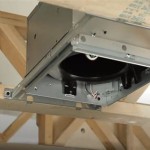Bathroom Fans: Building Regulations
Ensuring proper ventilation in bathrooms is crucial for maintaining air quality and preventing moisture-related issues such as mold growth and structural damage. Building regulations provide specific guidelines for bathroom fan installation to safeguard occupants' health and well-being. Understanding these regulations is essential for both homeowners and contractors to ensure compliance and create a safe and comfortable bathroom environment.
Ventilation Requirements
Building regulations dictate the minimum airflow requirements for bathroom fans. The airflow rate is typically measured in cubic feet per minute (CFM) or liters per second (l/s). The required CFM will depend on the size of the bathroom and the type of fixtures present. Larger bathrooms with showers or bathtubs will generally require higher CFM ratings to effectively remove moisture and odors.
Fan Location and Ducting
Regulations also address the appropriate location for bathroom exhaust fans and the ducting used to vent the air outside. Fans should be positioned strategically to maximize airflow and effectively remove moisture from the entire bathroom space. Ducting must be properly sized and sealed to prevent air leakage and ensure efficient ventilation. Using smooth-walled ducts, such as PVC or metal, is generally recommended over flexible ducts, as they offer less resistance to airflow.
Electrical Requirements
Bathroom fans must be installed according to electrical codes to ensure safety. This includes using appropriate wiring, grounding, and circuit protection. Fans should be connected to a dedicated Ground Fault Circuit Interrupter (GFCI) protected circuit to prevent electrical shocks in the damp bathroom environment. It's essential to consult local electrical codes for specific requirements.
Sound Levels
While effective ventilation is paramount, excessively loud bathroom fans can be disruptive. Building regulations often address permissible sound levels for bathroom fans, typically measured in sones. Choosing a fan with a lower sone rating will ensure quieter operation and a more comfortable bathroom environment. HVI-certified fans offer verified sound and airflow performance data, making it easier to select a suitable model.
Exterior Vent Termination
Proper venting of the exhaust air to the exterior of the building is vital. Building regulations specify acceptable methods for terminating the ductwork, which often involve using a hooded vent cap to prevent backdrafts and keep out pests. The vent should be located away from open windows and air intake vents to avoid recirculating the exhausted air back into the building. Regulations may also specify a minimum distance from property lines and other structures.
Inspection and Compliance
In many jurisdictions, bathroom fan installations are subject to inspection to ensure compliance with building regulations. It is crucial to obtain the necessary permits and schedule inspections before commencing any work. A qualified inspector will verify that the fan, ducting, and electrical connections meet the required standards, ensuring the safety and functionality of the ventilation system.
Fire Safety
Building regulations may include specific fire safety requirements for bathroom fans, particularly in multi-family dwellings. This can involve using fire-rated dampers in the ductwork to prevent the spread of fire and smoke between units. It's essential to check local fire codes for specific requirements regarding fire-rated construction and damper installation.
Energy Efficiency
Increasingly, building regulations are incorporating energy efficiency standards for bathroom fans. This may involve specifying minimum efficiency ratings or encouraging the use of ENERGY STAR certified fans. These fans consume less energy while still providing adequate ventilation, reducing energy costs and environmental impact.
Understanding and adhering to these building regulations for bathroom fans is paramount for creating a safe, healthy, and comfortable bathroom environment. Proper ventilation not only prevents moisture-related problems but also contributes to improved indoor air quality and overall well-being.

Bathroom Regulations Vent Axia

Choosing The Right Bathroom Fan

Bathroom Zoning Ip Ratings For Ventilation Envirovent

Bathroom Regulations Vent Axia

Domestic Fan Installation Compliance Checker Vent Axia

What Air Extractor Fans To Site In Each Room For A Good Extraction Manrose Advice

Why You Should Upgrade Your Bathroom Fan Sylvane

Extractor Fan World S Guide To Bathroom Zones

Ventilation Pa Energy Code

Bathroom Fans A Complete Guide
Related Posts







